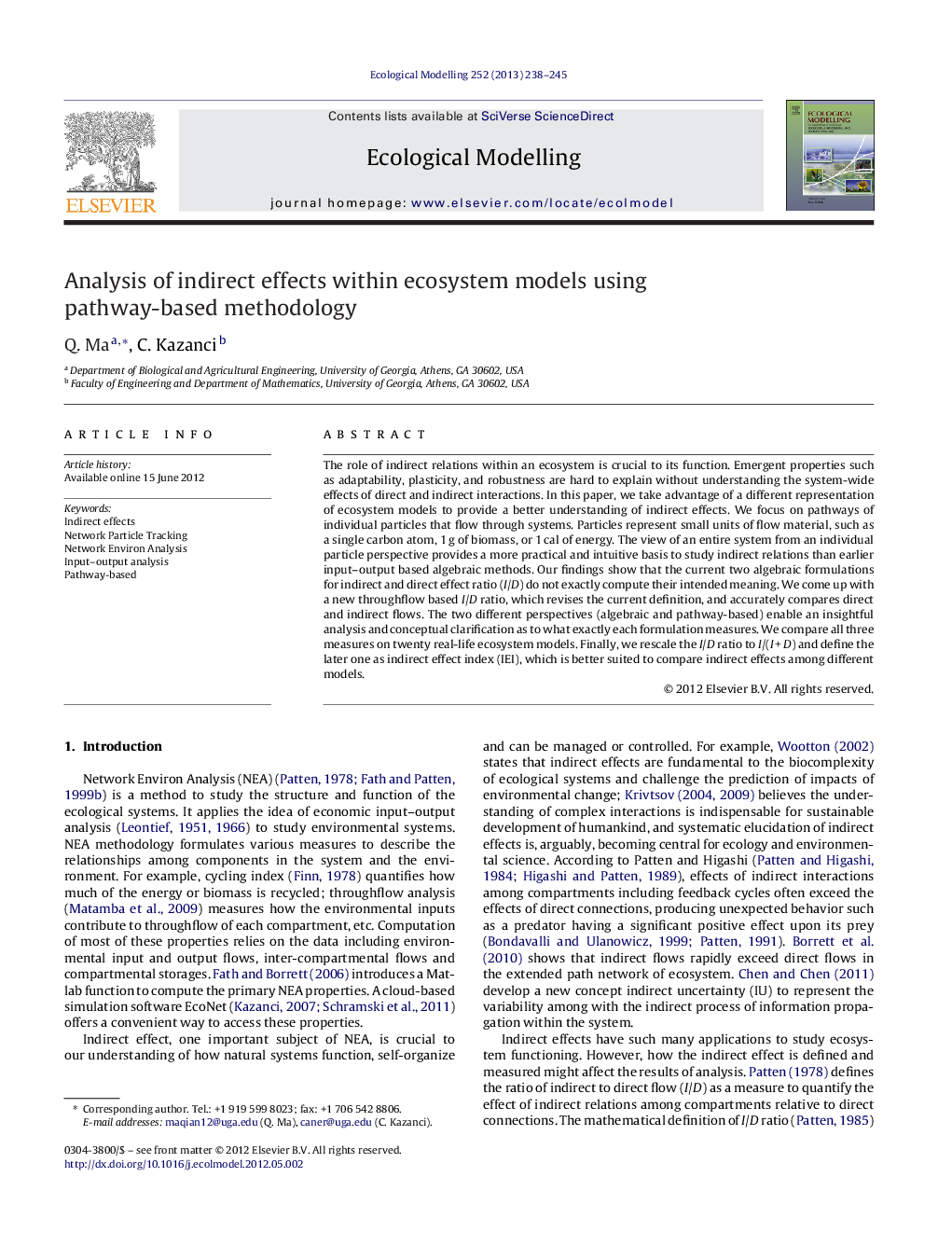| Article ID | Journal | Published Year | Pages | File Type |
|---|---|---|---|---|
| 4376206 | Ecological Modelling | 2013 | 8 Pages |
The role of indirect relations within an ecosystem is crucial to its function. Emergent properties such as adaptability, plasticity, and robustness are hard to explain without understanding the system-wide effects of direct and indirect interactions. In this paper, we take advantage of a different representation of ecosystem models to provide a better understanding of indirect effects. We focus on pathways of individual particles that flow through systems. Particles represent small units of flow material, such as a single carbon atom, 1 g of biomass, or 1 cal of energy. The view of an entire system from an individual particle perspective provides a more practical and intuitive basis to study indirect relations than earlier input–output based algebraic methods. Our findings show that the current two algebraic formulations for indirect and direct effect ratio (I/D) do not exactly compute their intended meaning. We come up with a new throughflow based I/D ratio, which revises the current definition, and accurately compares direct and indirect flows. The two different perspectives (algebraic and pathway-based) enable an insightful analysis and conceptual clarification as to what exactly each formulation measures. We compare all three measures on twenty real-life ecosystem models. Finally, we rescale the I/D ratio to I/(I + D) and define the later one as indirect effect index (IEI), which is better suited to compare indirect effects among different models.
► Existing I/D ratio formulation compares direct and indirect flows inaccurately. ► A new I/D formulation is defined using pathway-based method. ► Old and new indices are compared over twenty ecosystem models. ► I/D indices are vastly different for low cycling models. ► A rescaled version of I/D ratio is defined as indirect effects index (IEI).
